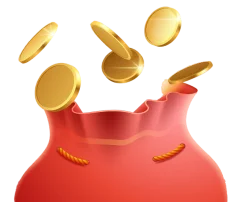Please allow ads on our site
Please log in to access this content. You will be redirected to the login page shortly.
LoginSolve : Upgraded to Windows 8.1, ruined my computer?
Microsoft Windows Windows 8 in Microsoft Windows 3 years ago
About a year ago I upgraded my computer to Windows 8. This , coupled with a RAM and an HDD upgrade, made my 5 year old computer run the best that it has in a long time, and I was happy.
Windows 8.1 then came out, and I tried to update. It wouldn't let me, as I would get an error. I really wanted to upgrade as I was having some sort of issue with my Apps. They would start up, load for a few seconds, and then crash without even displaying.
The computer worked fine in Desktop mode however, so I decided to go on with my life.
Yesterday, I finally had time to try to upgrade my computer again, so I decided to do so.
It actually managed to download the whole thing, so I was excited to upgrade my computer.
I went through the upgrade process, but when it finished I noticed something strange.
My computer was running slower. Much slower.
Once the upgrade finished, I scrambled to try to figure out what could cause it to be so SLOW.
I tried a virus check, disc cleanup, defragmentation and care with iObit's advanced systemcare, but none of them seemed to work.
I stumbled upon an online source which said that it could be a corrupt profile issue. And indeed, I checked another user profile on my machine and it seemed to be working better, and the Windows 8 apps actually ran.
So I tried to do what they told me to: move all the files in one User folder to another and remove the old profile.
Turns out that wasn't such a great idea either.
I created a new user profile.
While I was trying to move all my files, a lot of them wouldn't move, or they needed to be moved in smaller batches. I moved what I can, and noticed that Windows was giving me a 'drive error' notification. I restarted my computer and went into the new profile and deleted the old profile.
At first, none of the apps would even launch. Then I tried to use System Restore and realized I couldn't because my old profile was deleted.
My Google Drive folder is ALSO inaccessible and I can't seem to install another copy/instance of GDrive.
I restarted again and now apps are actually launching and things seem to be working a little better, but the computer is still slow.
So here I am, stuck with a slower computer, wishing I never updated to 8.1.
I am asking for assistance because I feel helpless. I do not know what to do to make my computer run faster, or return to its old state, and I hope someone here does.
Thank you for your timeCan you please share with us your computer make/model or if custom built the hardware specifics so we know what you are working with? A 5 year old computer doesnt state enough about it to assist at this point. Also if its an off the shelf computer, please state the upgrade info such as upgraded to 4GB of DDR2 800Mhz RAM from 2GB DDR2 800Mhz etc.Quote from: DaveLembke on December 26, 2013, 07:37:03 PM
Can you please share with us your computer make/model or if custom built the hardware specifics so we know what you are working with? A 5 year old computer doesnt state enough about it to assist at this point. Also if its an off the shelf computer, please state the upgrade info such as upgraded to 4GB of DDR2 800Mhz RAM from 2GB DDR2 800Mhz etc.No problem.
It's a store bought computer, an HP Pavilion a6177c TV PC. Comes with all sorts of nice things like a TV and Radio card and such. Not the strongest hardware though...
Processor: Intel Core 2 Duo E6550 with Viiv, clocked at 2.33GHz
Original operating system was 32 Bit Vista.
Original Ram was 2 GB
Windows is installed on a 400GB harddrive.
I've replaced the Disc drive once before because it stopped working.
Original Videocard is GeForce 7350 LE.
Since I've bought it, I've replaced the video card twice, and now I have:
GeForce GT 520 with 1GB RAM
4 GB RAM (just removed the two 1GB sticks and put two 2GB sticks)
And I ADDED a WD Black 1TB hard drive.Do you have the original recovery media to restore the system back to its original configuration with Windows Vista? If so, then using it to get back to Vista and then installing your Windows 8 OS again and, finally, doing the upgrade to Windows 8.1 again may be a long route to getting your system running right.
Of course, you should have all your important files backed up on some external storage media. If not, you'll lose it by taking the route to restoring your system. Quote from: soybean on December 27, 2013, 08:01:53 AM
Do you have the original recovery media to restore the system back to its original configuration with Windows Vista? If so, then using it to get back to Vista and then installing your Windows 8 OS again and, finally, doing the upgrade to Windows 8.1 again may be a long route to getting your system running right.I don't think that it's necessary to go all the way back to Vista. I don't have my Vista media anyway... maybe if I could just go back down to Windows 8 it'd work better.Quote from: OmriSama on December 27, 2013, 12:27:12 PM
Of course, you should have all your important files backed up on some external storage media. If not, you'll lose it by taking the route to restoring your system.
... maybe if I could just go back down to Windows 8 it'd work better.I don't believe that is an option. Microsoft designed this update to be irreversible. When your computer was new, it had a recovery partition; this is usually drive D. Did you remove that? If you truly no longer have a way to restore Windows Vista, you can get recovery discs from HP. They will charge a fee but I believe it will be less than $20. They will need to model of your computer and a serial #. Quote
care with iObit's advanced systemcare
Also, avoid tools like this that promise to "Speed up" your PC, they don't improve anything and often cause a lot more problems than they solve. In fact, having your PC clogged up with tools like this can often slow it down. I'd remove all "Speed up" tools that are installed and see if that helps.Quote from: camerongray on December 27, 2013, 04:01:14 PM
Also, avoid tools like this that promise to "Speed up" your PC, they don't improve anything and often cause a lot more problems than they solve. In fact, having your PC clogged up with tools like this can often slow it down. I'd remove all "Speed up" tools that are installed and see if that helps.What about CCleaner? The guy above you uses it... haha. But I mean, I had those when I was on Windows 8 and my System worked fine.
Everything just changed when I upgraded to 8.1
And yeah, I got a recovery partition. Never checked it out though, and I don't know how to use it.Quote
What about CCleaner? The guy above you uses it...CCleaner is a safe application.
Quote
And yeah, I got a recovery partition.Here's some information about the Recovery partition.But you can't even use your recovery partition to roll back to Windows 8 so it's useless, just like it always has been.Quote from: OmriSama on December 30, 2013, 02:01:27 AM
But you can't even use your recovery partition to roll back to Windows 8 so it's useless, just like it always has been.The recovery partition is there for a SPECIFIC purpose, which is to restore a system back to its configuration when new. So, it's definitely not useless; without it, computer users who find they need to format a hard drive (the OS partition) and reinstall their OS would have to buy a retail or OEM version of the OS.
Furthermore, users should create recovery discs (CD/DVD) from the recovery partition on the hard drive so that they can restore their system if they have to replace failed hard drive. If a hard drive fails and you have not burned a DVD from your recovery partition, then you're in that situation again where you have to buy the OS.
As I said in a previous post, you have the option of restoring the system to your original OS (Vista) and then doing the upgrade to Win 8 and then, if desired, another upgrade to Win 8.1. I assuming you have a disc for Win 8 upgrade from XP/Vista/7. If not, then how did you get it installed in the first place? Quote from: soybean on December 30, 2013, 08:25:25 AM
The recovery partition is there for a specific purpose, which is to restore a system back to its configuration when new. So, it's definitely not useless; without it, computer users who find they need to format a hard drive (the OS partition) and reinstall their OS would have to buy a retail or OEM version of the OS.So Vista came installed with the computer when I bought it, and for Windows 8 I bought the 40 dollar upgrade and used that.
Furthermore, users should create recovery discs (CD/DVD) from the recovery partition on the hard drive so that they can restore their system if they have to replace failed hard drive. If a hard drive fails and you have not burned a DVD from your recovery partition, then you're in that situation again where you have to buy the OS.
As I said in a previous post, you have the option of restoring the system to your original OS (Vista) and then doing the upgrade to Win 8 and then, if desired, another upgrade to Win 8.1. I assuming you have a disc for Win 8 upgrade from XP/Vista/7. If not, then how did you get it installed in the first place?
I can get Windows 8 for free though, because of Dreamspark.
Posted on 18 May 2022, this text provides information on Microsoft Windows related to Windows 8 in Microsoft Windows. Please note that while accuracy is prioritized, the data presented might not be entirely correct or up-to-date. This information is offered for general knowledge and informational purposes only, and should not be considered as a substitute for professional advice.
Take Quiz To Earn Credits!
Turn Your Knowledge into Earnings.

No matter what stage you're at in your education or career, TuteeHub will help you reach the next level that you're aiming for. Simply,Choose a subject/topic and get started in self-paced practice sessions to improve your knowledge and scores.

